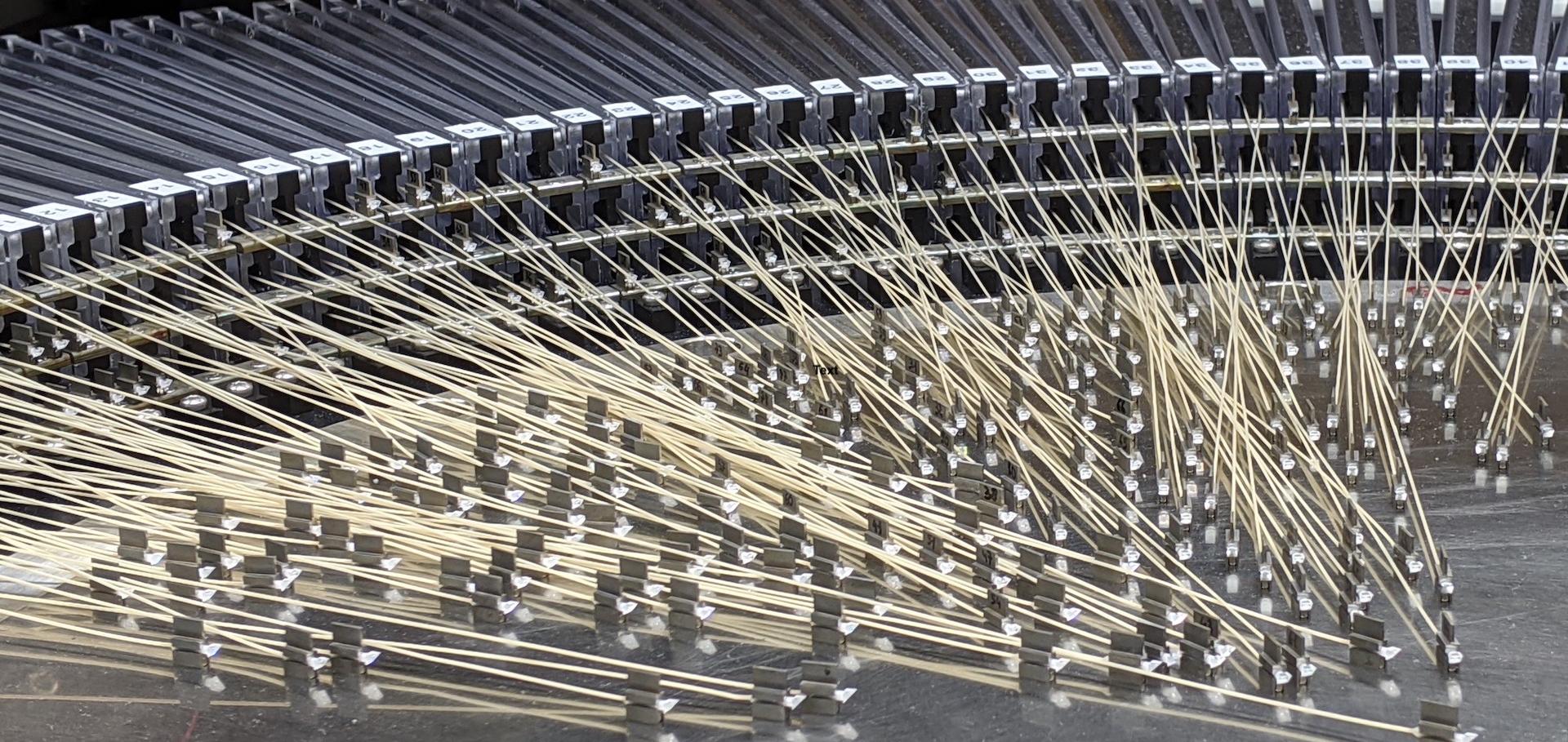Construction progress of WEAVE: the next generation wide-field spectroscopy facility for the William Herschel Telescope
Proceedings Volume 10702, Ground-based and Airborne Instrumentation for Astronomy VII Society of Photo-optical Instrumentation Engineers 10702 (2018)
Abstract:
We present an update on the overall construction progress of the WEAVE next-generation spectroscopy facility for the William Herschel Telescope (WHT), now that all the major fabrication contracts are in place. We also present a summary of the current planning behind the 5-year initial phase of survey operations, and some detailed end-to-end science simulations that have been effected to evaluate the final on-sky performance after data processing. WEAVE will provide optical ground-based follow up of ground-based (LOFAR) and space-based (Gaia) surveys. WEAVE is a multi-object and multi-IFU facility utilizing a new 2-degree prime focus field of view at the WHT, with a buffered pick-and-place positioner system hosting 1000 multi-object (MOS) fibres, 20 integral field units, or a single large IFU for each observation. The fibres are fed to a single (dual-beam) spectrograph, with total of 16k spectral pixels, located within the WHT GHRIL enclosure on the telescope Nasmyth platform, supporting observations at R~5000 over the full 370-1000nm wavelength range in a single exposure, or a high resolution mode with limited coverage in each arm at R~20000. The project has experienced some delays in procurement and now has first light expected for the middle of 2019.First lab results of the WEAVE fibre positioner system
Ground-based and Airborne Instrumentation for Astronomy VII Society of Photo-optical Instrumentation Engineers (2018)
Abstract:
WEAVE is the new wide-field spectroscopy facility for the prime focus of the William Herschel Telescope on La Palma in the Canary Islands, Spain. It is a multi-object “pick-and-place” fibre-fed spectrograph with a 960 fibre multiplex behind a new dedicated 2° prime focus corrector. We provide an update on the fibre positioner's technical progress. The hardware has been fully assembled and integrated with its control system for testing. We have made initial calibrations and are starting to move test fibres. In the near future we will dismantle for final modifications and surface anodising, before final reassembly and full fibre installation.MOSAIC: the ELT Multi-Object Spectrograph
Proceedings of SPIE Society of Photo-optical Instrumentation Engineers (2018)
Abstract:
Following a successful Phase A study, we introduce the delivered conceptual design of the MOSAIC1 multi-object spectrograph for the ESO Extremely Large Telescope (ELT). MOSAIC will provide R~5000 spectroscopy over the full 460-1800 nm range, with three additional high-resolution bands (R~15000) targeting features of particular interest. MOSAIC will combine three operational modes, enabling integrated-light observations of up to 200 sources on the sky (high-multiplex mode) or spectroscopy of 10 spatially-extended fields via deployable integral-field units: MOAO6 assisted high-definition (HDM) and Visible IFUs (VIFU). We will summarise key features of the sub-systems of the design, e.g. the smart tiled focal-plane for target selection and the multi-object adaptive optics used to correct for atmospheric turbulence, and present the next steps toward the construction phase.Simulating surveys for ELT-MOSAIC: Status of the MOSAIC science case after phase A
Ground-based and Airborne Instrumentation for Astronomy VII Society of Photo-optical Instrumentation Engineers (2018)
Abstract:
We present the consolidated scientific case for multi-object spectroscopy with the MOSAIC concept on the European ELT. The cases span the full range of ELT science and require either ‘high multiplex’ or ‘high definition’ observations to best exploit the excellent sensitivity and wide field-of-view of the telescope. Following scientific prioritisation by the Science Team during the recent Phase A study of the MOSAIC concept, we highlight four key surveys designed for the instrument using detailed simulations of its scientific performance. We discuss future ways to optimise the conceptual design of MOSAIC in Phase B, and illustrate its competitiveness and unique capabilities by comparison with other facilities that will be available in the 2020s.Antireflective coatings for the red camera of WEAVE spectrograph
SPIE Astronomical Telescopes + Instrumentation 2018 Society of Photo-optical Instrumentation Engineers (2018)


